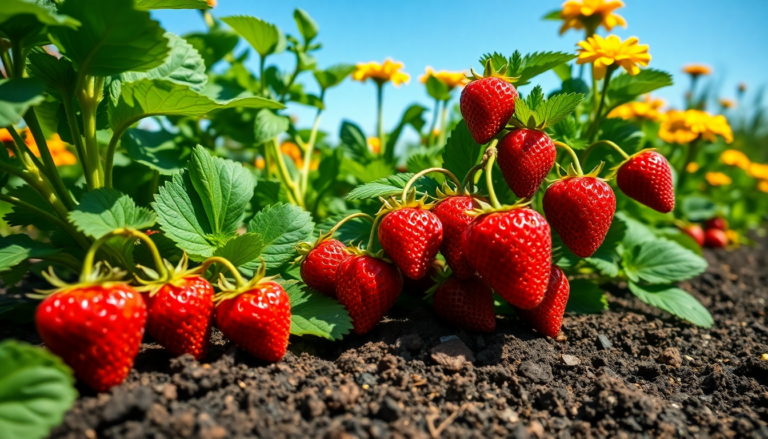Argomenti trattati
As the gardening season kicks into high gear, many enthusiasts are on the lookout for ways to boost their strawberry yields. One of the most effective tricks up their sleeves is companion planting. This technique not only maximizes your garden space but also enhances the health and productivity of your plants. But what exactly is companion planting? It’s all about choosing plant partners that benefit one another, creating a thriving ecosystem right in your backyard. By figuring out which plants complement strawberries, you can cultivate a vibrant and productive growing environment.
The Science Behind Companion Planting
So, what’s the big deal about companion planting? It’s grounded in the principles of biodiversity and mutual benefit. The idea is simple: certain plants can help each other grow, improve soil health, and keep pests at bay. When it comes to strawberries, selecting the right companions can lead to a noticeable boost in yield and quality. For instance, quick-growing greens can fill in the gaps around strawberries while they mature, reducing weeds and helping to retain soil moisture. Isn’t that a win-win?
In my experience, the right companion plants can make all the difference in a garden’s productivity. Take spinach, for example. This leafy green thrives in the shaded environment created by strawberry plants, allowing both crops to benefit from each other’s presence. It’s a great demonstration of how thoughtful combinations can lead to shared nutrients and resources.
Best Companion Plants for Strawberries
When you’re selecting companions for strawberries, it’s crucial to pick plants that enhance their growth without competing for nutrients. Here are some top contenders that you might want to consider:
- Spinach: This leafy green helps retain moisture and suppress weeds, making it a stellar companion.
- Lettuce: Acting as a living mulch, lettuce cools the soil and hides ripening strawberries from hungry birds.
- Borage: Known for attracting bees, borage enriches the soil with trace minerals, promoting overall plant health.
- Sage: This fragrant herb not only keeps pests at bay but also invites pollinators to your garden.
- Garlic: With its potent aroma, garlic serves as a natural pest deterrent, protecting strawberries from common threats.
These plants contribute to a healthier garden ecosystem and boost strawberry yields, making them invaluable companions.
What to Avoid When Planting Strawberries
While it’s great to know which companions to choose, it’s just as important to be aware of what to avoid. Certain vegetables, particularly those in the cabbage family, like broccoli and kale, can compete for nutrients and ultimately stunt the growth of your strawberries. Also, steer clear of fennel, as it’s known to inhibit the growth of neighboring plants, which isn’t ideal for your strawberry patch.
Understanding these dynamics is essential for any gardener looking to optimize their strawberry production. By crafting a balanced planting scheme, you can significantly enhance the overall health and productivity of your garden.
Implementing Companion Planting Strategies
Ready to dive into companion planting? Start by considering the layout of your garden and how the plants will grow together. Map out your space, ensuring that companion plants are placed strategically to maximize their benefits. For instance, planting fast-growing greens like spinach between rows of strawberries can create a beneficial microclimate while also making the best use of your space.
Don’t forget the importance of regular monitoring. Keeping an eye on plant health and pest activity can provide insights into which combinations work best for you. Plus, rotating your crops annually can help maintain soil health and prevent pest build-up.
In conclusion, companion planting is a practical and effective strategy for enhancing strawberry yields. By choosing the right partners and avoiding those that could hinder growth, you can create a flourishing environment that not only supports your strawberries but also their companions. Ready to give it a try? Your garden will thank you!

